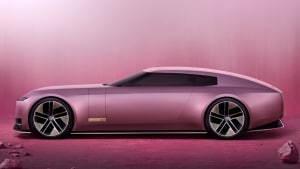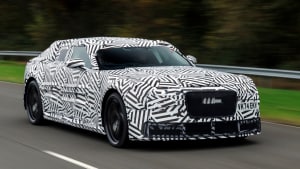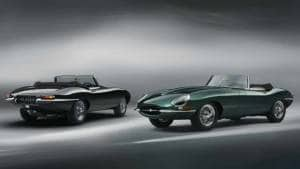Jaguar Land Rover develops technologies for autonomous off-road vehicles
Jaguar Land Rover showcased a new set of automotive technologies, which it claims would help future autonomous cars to navigate off-road terrains.
Developed by the company's Autonomous All Terrain Driving research team, the technology uses advanced sensors to detect a number of obstacles that one would commonly encounter when driving over challenging terrain such as rocks, slush, potholes, overhead branches etc., and preps the car to tackle them.
For instance, the company has developed ultrasonic sensor to detect the road surface, five metres ahead of the car. These sensors help the car's artificial intelligence understand the topography of the path that lies ahead. But hang on, that's not the whole picture.
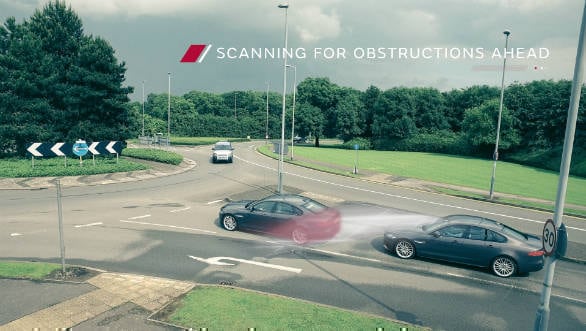
Besides ultrasonic sensors, the car also has radar and LIDAR (light detection and ranging) sensors to create a 3D map of what lies ahead of the car. LIDAR sensors (also used by Ford in its autonomous vehicles) measures distances (to objects in this case) by illuminating a target with a laser light. This gives the system a 360-degree view of its surroundings and predicts the 3D path it is going to driver over.
Another interesting technology is the Overhead Clearance Assist that uses a stereo camera (has dual lenses and simulates human binocular vision, giving it the ability to capture 3D images) technology to ensure that the roof does not brush against, or get damaged by overhead obstacles.
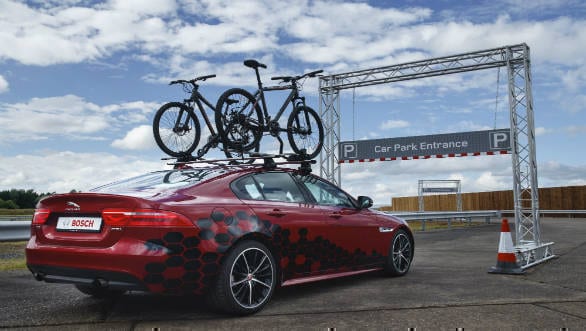
The driver has to simply enter the vehicle height, including top box, luggage, bicycles or anything that's required for a trip, and the car will warn the driver via a notification on the instrument cluster if there is no adequate clearance.
JLR says that given the capabilities of sensors to detect what's impossible for the human eye to see, these technologies will help a car's artificial intelligence predict the path and take required decisions based on the information.
Another technological development utilises cameras to ascertain the quality of the road surface ahead and adjusts speed accordingly. Called Terrain Based Speed Adaptation (TBSA), the system detects the presence of undulating surfaces, potholes submerged in water and the likes. It then calculates the effect that the road surface would have on ride quality and reduces the car's speed so that the passengers don't feel the jolts.
While this system reduces vehicle speed, there are systems like the radar-based magic carpet ride in the Mercedes-Benz S-Class, which alter the damping in the suspension to iron out road imperfections.
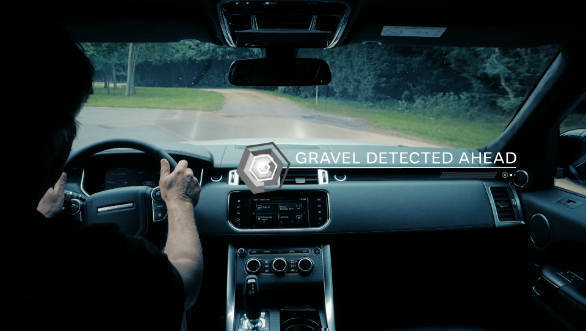
Off-road expeditions are often carried out on groups, and keeping that in mind, the research facility has also developed an Off Road Connected Convoy system that lets vehicles in a group share information.
The wireless vehicle-to-vehicle communication relays information such as position and off-road mode selection to all vehicles in a group. This is particularly beneficial when tackling unknown terrain.
In a demonstration exercise, JLR connected two Range Rover Sport SUVs that utilise the communication to tackle obstacles.
Tony Harper, head of research at JLR, said, "This V2V communications system can seamlessly link a convoy of vehicles in any off-road environment. If a vehicle has stopped, other vehicles in the convoy will be alerted. If the wheels drop into a hole, or perhaps slip on a difficult boulder, this information is transmitted to all of the other vehicles. In the future, a convoy of autonomous vehicles would use this information to automatically adjust their settings or even change their route to help them tackle the obstacle."
Jaguar Land Rover's new suite of technologies for autonomous cars addresses quite a number of issues that self-driven cars face.
Autonomous cars are still quite away from making it to commercial production, and even after thousands of kilometers of testing by car manufacturers, a few glitches do crop up. JLR's solution for off-road autonomous vehicles seems quite feasible, and it may not be surprising to see the company use a few of these technologies in the cars driven by humans.
Starts Rs 1.57 Crore
2925cc
Automatic
290
600
-NA-
